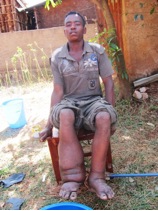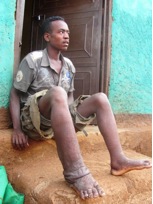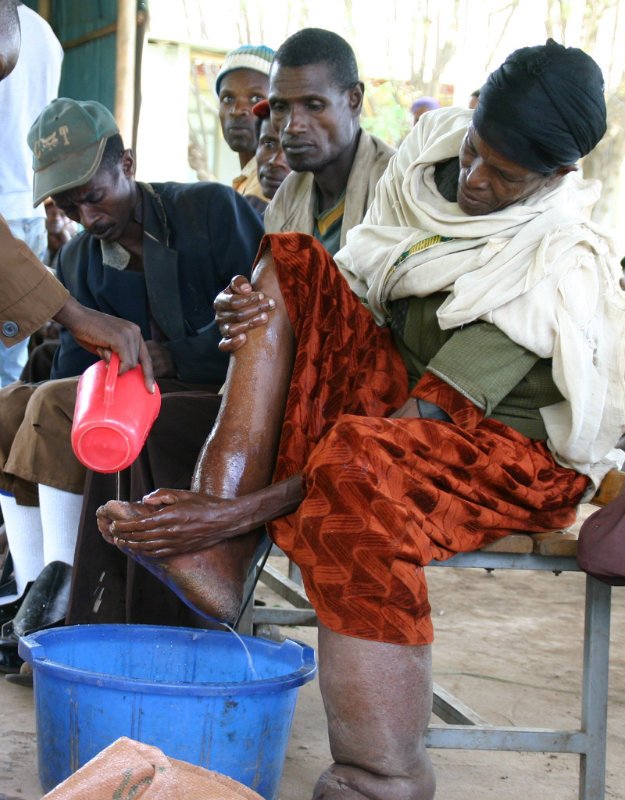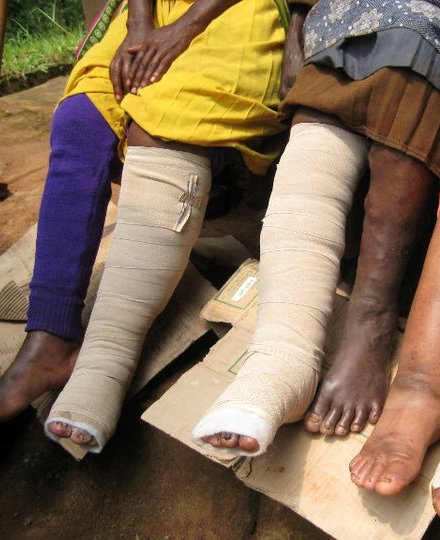Prevention And Treatment
Prevention
In Ethiopia, the Mossy Foot Project strives to educate the population about podoconiosis: what it is and how to treat and prevent it. Along with this we aim to help remove the social stigma associated with the disease so as to be more effective in exposing and treating it. Many of those involved in the education process are present or former patients, who are in an exceptional position to carry the message effectively.
The most obvious strategy for the eradication of podoconiosis is simply preventing the malady by:
- Wearing shoes and socks to prevent the occurrence of the disease in those not yet afflicted
- Wearing shoes and socks to stop the progression of the disease among those already afflicted
- Educating young children and their parents in prevention strategies
- Utilizing former patients to spread the word as well as assist in treatment

Treatment
The good news about Mossy Foot is that the condition is highly treatable. Not only that, but in the majority of cases simple, inexpensive treatment has dramatic results.
Typically, treatment entails:
- Foot hygiene: regular washing the legs and feet with soap, water, and antiseptics
- Regularly moisturizing the skin with a simple skin cream and treating between the toes with anti-fungal ointment
- Using elastic bandages (for more swollen legs)
- Elevating feet at night
- Wearing socks and shoes
If the disease is treated early, the patient’s feet and legs can return to a normal size. Patients with advanced disease show great improvements if they follow the same program, but it may be difficult to get back to a completely air jordan 30 quai 54 cosmos 863586 010 normal-looking foot. The aim for these patients is that the disease is controlled such that they can wear normal shoes, earn a living, and be accepted back into their society.
The Mossy Foot Project has 16 clinics in the Wolaitta zone. Each clinic treats over 200 patients per month.
At a patient’s first visit, their feet and legs are thoroughly washed, then soaked in a diluted bleach solution. This is followed by applying an antifungal ointment to their legs and feet. Patients are also given lymphatic massage to reduce swelling and they are taught how to massage their legs and feet at home.
Health care workers at the clinics wrap the patients’ legs with elastic bandages to apply compression. The patients remove the bandages at night and elevate their feet, then rewrap the bandages the next day.
On-Going Treatment
Patients are sent home with a treatment kit so that they can follow a treatment plan at home, including regular washing, applying ointment and elevating their legs at night. Then they return to the clinics for regular followup. Precise measurements are taken of the patients’ legs at each visit to monitor progress in their treatment.
Despite the condition of their legs and feet, patients will often walk miles to receive their treatment from a Mossy Foot clinic.
Shoes for Mossy Foot Patients
Mossy Foot Project provides special oversized shoes for the patients to wear so that they are able to keep their feet clean until the feet return to a normal size. These shoes are made air jordan 6 carmine 2021 release date by former mossy foot patients, providing them useful employment. You can read about the detailed steps for making shoes here.

Gadana when he first arrived at the clinic

Gadana after 1 week of treatment
Treatment Progress
These two pictures of Gadana Gata, a young man who was treated at the Mossy Foot clinic, show how after just a week of treatment, the swelling of his leg has decreased dramatically. This young man, who dropped out of school in fifth grade because of his condition, was greatly nike air jordan 1 factory outlet encouraged to continue faithfully nike sb dunk low ae86 cream black purple for sale with the treatment steps.






